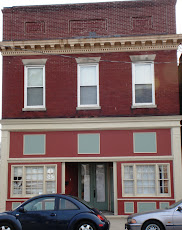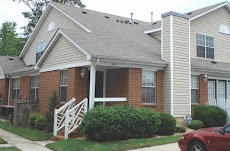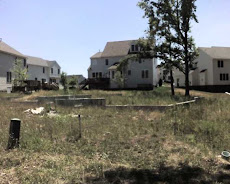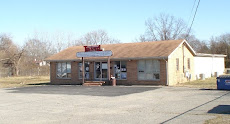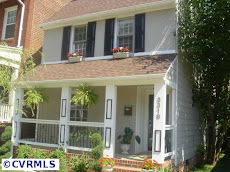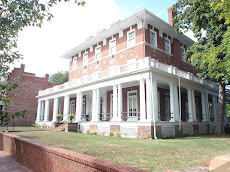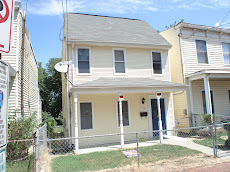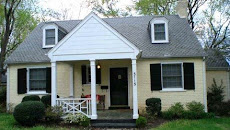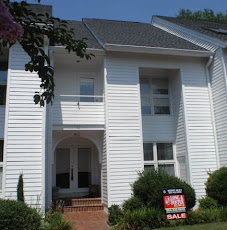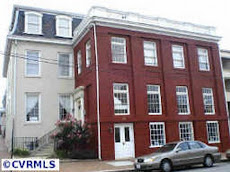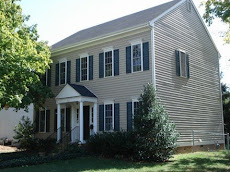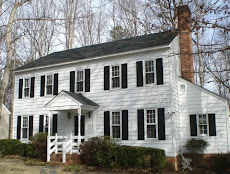Tuesday, May 25, 2010
Nesting Blog: pie factory loft
click on this link to see blog post regarding new loft available to rent in Manchester: Nesting Blog: pie factory loft
Wednesday, May 19, 2010
FHA loans are back!
FHA loans are back in a big way
Posted by Kerry Riley on Tuesday, May 18, 2010
Since the death of 100% financing loans, FHA loans are back again and in increasing numbers as the the most attractive financing available.
FHA or Federal Home Administration loans have been around since 1937 as a way to promote home ownership through a loan guarantee program administered by the U. S. Department of Housing and Urban Development.
Basically, the federal government guarantees repayment of loans made by private lenders to qualifying individuals. The government acts as insurer on loans made under the program so the lenders have less risk and can allow just a 3 1/2 % down payment for a home mortgage.
This is the best deal around for anyone buying a home with little money to put down and struggling to get into that first home, or move up buyers strapped for cash but can afford the monthly payment and have decent credit. The FHA loan program is eligible for home purchases up to $ 535,900 in the Richmond area.
Who’s eligible?
Those persons with a credit score of at least 600 or higher with a qualifying income to debt ratio of 29/41%. What does that mean? The total loan payment for the house including taxes and insurance can’t exceed 29% of your monthly gross income, and this total housing payment plus your loan payments (credit card, student loans, auto loan..etc) can’t exceed 41% of your monthly gross income.
What about credit and other qualifying?
Generally speaking your credit score should be at least a 600 or better and your credit report should show a good pattern of borrowing and repaying loans. If you have no established credit, FHA allows for alternative means of proving credit worthiness with things like utility bills and the like.
Bankruptcy Chapter 13 is okay subject to certain conditions, and a Chapter 7 liquidation is okay, if you are two years past the discharge date. Even a foreclosure is okay if you are three years past the settlement date. Note that in these cases you need to have reestablished credit and kept up a good credit history after these events.
Even late payments and collections can be okay if a good pattern of credit is evidenced by your credit report and letters of explanations of the circumstances surrounding bad credit (medical bills, illness, loss of job..etc). The exceptions are federal debts such as taxes and student loans. These must be in good standing.
What about loan fees and closing costs?
The borrower using an FHA loan can negotiate with the home seller to get a 3% contribution towards their closing cost. These are the costs associated with getting a new loan and paying for recordation, attorney’s fees, etc. A 3% seller contribution should be sufficient to cover these costs.
A good strategy for negotiation in buying is to press the seller to pay the closing costs with a reasonable offer on their home. As long as the asking price is fair, as evidenced by a Realtors market analysis and an appraisal, it may be better to get a concession for the closing costs, then, the 3 1/2% down-payment would be all they need to close.
This strategy is only good in a market where sellers are willing to pay a concession for closing costs. Now is a good time for buyers to negotiate as inventory levels are still high and sellers are more competitive. This will not always be the case.
So, if you are renting or want to move up, set your monthly goal to save enough to cover 3 1/2% of your dream home’s value. For example: if you could save around $ 8,000, and negotiate to have the seller pay the closing costs, you could get a home in the $220,000 to $ 230,000 range, and have a payment around $ 1,200 to $ 1,400 per month.
If you are already paying rent in that range, then what are you waiting for. FHA also allows for gift funds to cover the down-payment. Be extra nice to that rich uncle at the next family picnic.
Interested? Check out the government’s webpage at HUD.org and follow the links for FHA loans for all the details, and check with your local lender and Realtor.
Posted by Kerry Riley on Tuesday, May 18, 2010
Since the death of 100% financing loans, FHA loans are back again and in increasing numbers as the the most attractive financing available.
FHA or Federal Home Administration loans have been around since 1937 as a way to promote home ownership through a loan guarantee program administered by the U. S. Department of Housing and Urban Development.
Basically, the federal government guarantees repayment of loans made by private lenders to qualifying individuals. The government acts as insurer on loans made under the program so the lenders have less risk and can allow just a 3 1/2 % down payment for a home mortgage.
This is the best deal around for anyone buying a home with little money to put down and struggling to get into that first home, or move up buyers strapped for cash but can afford the monthly payment and have decent credit. The FHA loan program is eligible for home purchases up to $ 535,900 in the Richmond area.
Who’s eligible?
Those persons with a credit score of at least 600 or higher with a qualifying income to debt ratio of 29/41%. What does that mean? The total loan payment for the house including taxes and insurance can’t exceed 29% of your monthly gross income, and this total housing payment plus your loan payments (credit card, student loans, auto loan..etc) can’t exceed 41% of your monthly gross income.
What about credit and other qualifying?
Generally speaking your credit score should be at least a 600 or better and your credit report should show a good pattern of borrowing and repaying loans. If you have no established credit, FHA allows for alternative means of proving credit worthiness with things like utility bills and the like.
Bankruptcy Chapter 13 is okay subject to certain conditions, and a Chapter 7 liquidation is okay, if you are two years past the discharge date. Even a foreclosure is okay if you are three years past the settlement date. Note that in these cases you need to have reestablished credit and kept up a good credit history after these events.
Even late payments and collections can be okay if a good pattern of credit is evidenced by your credit report and letters of explanations of the circumstances surrounding bad credit (medical bills, illness, loss of job..etc). The exceptions are federal debts such as taxes and student loans. These must be in good standing.
What about loan fees and closing costs?
The borrower using an FHA loan can negotiate with the home seller to get a 3% contribution towards their closing cost. These are the costs associated with getting a new loan and paying for recordation, attorney’s fees, etc. A 3% seller contribution should be sufficient to cover these costs.
A good strategy for negotiation in buying is to press the seller to pay the closing costs with a reasonable offer on their home. As long as the asking price is fair, as evidenced by a Realtors market analysis and an appraisal, it may be better to get a concession for the closing costs, then, the 3 1/2% down-payment would be all they need to close.
This strategy is only good in a market where sellers are willing to pay a concession for closing costs. Now is a good time for buyers to negotiate as inventory levels are still high and sellers are more competitive. This will not always be the case.
So, if you are renting or want to move up, set your monthly goal to save enough to cover 3 1/2% of your dream home’s value. For example: if you could save around $ 8,000, and negotiate to have the seller pay the closing costs, you could get a home in the $220,000 to $ 230,000 range, and have a payment around $ 1,200 to $ 1,400 per month.
If you are already paying rent in that range, then what are you waiting for. FHA also allows for gift funds to cover the down-payment. Be extra nice to that rich uncle at the next family picnic.
Interested? Check out the government’s webpage at HUD.org and follow the links for FHA loans for all the details, and check with your local lender and Realtor.
Monday, May 10, 2010
"White flight" out of cities is more like "Bright flight" back in.
I found this article while surfing the web which talks about a new trend of people coming back to the cities and a reversal of demographics between Urban and suburban areas in America.
I have definitely seen evidence of this in the City of Richmond. We have seen net gains in the population in the City reversing a twenty year trend of shrinking population size.
We Realtors keep a finger on the pulse of housing trends and real estate market changes. Certainly in the City of Richmond we have seen lots of gentrification of older, run-down neighborhoods and home buyers "discovering" city living.
Incidentally, I had a recent sale where a young couple bought in the city after looking and saying that they only wanted the West End suburbs. In the end they said that the outer suburbs did not "feel right" and moved to the city.
Here is a re-post from the Huffington post which cites the Brookings Institution report:
WASHINGTON - White flight? In a reversal, America's suburbs are now more likely to be home to minorities, the poor and a rapidly growing older population as many younger, educated whites move to cities for jobs and shorter commutes.
An analysis of 2000-2008 census data by the Brookings Institution highlights the demographic "tipping points" seen in the past decade and the looming problems in the 100 largest metropolitan areas, which represent two-thirds of the U.S. population.
The findings could offer an important road map as political parties, including the tea party movement, seek to win support in suburban battlegrounds in the fall elections and beyond. In 2008, Barack Obama carried a substantial share of the suburbs, partly with the help of minorities and immigrants.
The analysis being released Sunday provides the freshest detail on the nation's growing race and age divide, which is now feeding tensions in Arizona over its new immigration law.
Ten states, led by Arizona, surpass the nation in a "cultural generation gap" in which the senior populations are disproportionately white and children are mostly minority.
This gap is pronounced in suburbs of fast-growing areas in the Southwest, including those in Florida, California, Nevada, and Texas.
"A new metro map is emerging in the U.S. that challenges conventional thinking about where we live and work," said Alan Berube, research director with the Metropolitan Policy Program at Brookings, a nonpartisan think-tank based in Washington. "The old concepts of suburbia, Sun Belt and Rust Belt are outdated and at odds with effective governance."
Story continues below
Suburbs still tilt white. But, for the first time, a majority of all racial and ethnic groups in large metro areas live outside the city. Suburban Asians and Hispanics already had topped 50 percent in 2000, and blacks joined them by 2008, rising from 43 percent in those eight years.
Suburbs are home to the vast majority of baby boomers age 55 to 64, a fast-growing group that will strain social services after the first wave of boomers turns 65 next year.
Analysts attribute the racial shift to suburbs in many cases to substantial shares of minorities leaving cities, such as blacks from New Orleans in the aftermath of Hurricane Katrina in 2005. Whites, too, are driving the trend by returning or staying put in larger cities.
Washington, D.C., and Atlanta posted the largest increases in white share since 2000, each up 5 percentage points to 44 percent and 36 percent, respectively. Other white gains were seen in New York, San Francisco, Boston and cities in another seven of the nation's 100 largest metro areas.
"A new image of urban America is in the making," said William H. Frey, a demographer at Brookings who co-wrote the report. "What used to be white flight to the suburbs is turning into 'bright flight' to cities that have become magnets for aspiring young adults who see access to knowledge-based jobs, public transportation and a new city ambiance as an attraction."
"This will not be the future for all cities, but this pattern in front runners like Atlanta, Portland, Ore., Raleigh, N.C., and Austin, Texas, shows that the old urban stereotypes no longer apply," he said.
The suburbs now have the largest poor population in the country. According to the analysis, between 1999 and 2008, the suburban poor grew by 25 percent; five times the growth rate of the poor in cities. During that same time period, the median household income in the U.S. declined by $2,241.
Of the top 100 metro areas, 42 experienced a drop in the size of their middle class, according to the Brookings analysis. Of those 42 cities, 10 saw the middle class decline by at least 5 percentage points.
The size of the middle class (households earning between 80 and 150 percent of median income) dropped almost 30 percent between 1999 and 2008.
The findings are part of Brookings' broad demographic portrait of America since 2000, when the country experienced the attacks of Sept. 11, 2001, a historic boom in housing prices and the worst economic downturn since the Great Depression.
Calling 2010 the "decade of reckoning," the report urges policymakers to shed outdated notions of America's cities and suburbs and work quickly to address the coming problems caused by the dramatic shifts in population.
Among its recommendations: affordable housing and social services for older people in the suburbs; better transit systems to link cities and suburbs; and a new federal Office of New Americans to serve the education and citizenship needs of the rapidly growing immigrant community.
Other findings:
_About 83 percent of the U.S. population growth since 2000 was minority, part of a trend that will see minorities become the majority by midcentury. Across all large metro areas, the majority of the child population is now nonwhite.
_ City residents are more likely to live in "deep" poverty, while a higher share of suburban residents have incomes just below the poverty line.
_For the first time in several decades, the population is growing at a faster rate than households, due to delays in marriage, divorce and births as well as longer life spans. People living alone and nonmarried couple families are among the fastest-growing in suburbs.
I have definitely seen evidence of this in the City of Richmond. We have seen net gains in the population in the City reversing a twenty year trend of shrinking population size.
We Realtors keep a finger on the pulse of housing trends and real estate market changes. Certainly in the City of Richmond we have seen lots of gentrification of older, run-down neighborhoods and home buyers "discovering" city living.
Incidentally, I had a recent sale where a young couple bought in the city after looking and saying that they only wanted the West End suburbs. In the end they said that the outer suburbs did not "feel right" and moved to the city.
Here is a re-post from the Huffington post which cites the Brookings Institution report:
WASHINGTON - White flight? In a reversal, America's suburbs are now more likely to be home to minorities, the poor and a rapidly growing older population as many younger, educated whites move to cities for jobs and shorter commutes.
An analysis of 2000-2008 census data by the Brookings Institution highlights the demographic "tipping points" seen in the past decade and the looming problems in the 100 largest metropolitan areas, which represent two-thirds of the U.S. population.
The findings could offer an important road map as political parties, including the tea party movement, seek to win support in suburban battlegrounds in the fall elections and beyond. In 2008, Barack Obama carried a substantial share of the suburbs, partly with the help of minorities and immigrants.
The analysis being released Sunday provides the freshest detail on the nation's growing race and age divide, which is now feeding tensions in Arizona over its new immigration law.
Ten states, led by Arizona, surpass the nation in a "cultural generation gap" in which the senior populations are disproportionately white and children are mostly minority.
This gap is pronounced in suburbs of fast-growing areas in the Southwest, including those in Florida, California, Nevada, and Texas.
"A new metro map is emerging in the U.S. that challenges conventional thinking about where we live and work," said Alan Berube, research director with the Metropolitan Policy Program at Brookings, a nonpartisan think-tank based in Washington. "The old concepts of suburbia, Sun Belt and Rust Belt are outdated and at odds with effective governance."
Story continues below
Suburbs still tilt white. But, for the first time, a majority of all racial and ethnic groups in large metro areas live outside the city. Suburban Asians and Hispanics already had topped 50 percent in 2000, and blacks joined them by 2008, rising from 43 percent in those eight years.
Suburbs are home to the vast majority of baby boomers age 55 to 64, a fast-growing group that will strain social services after the first wave of boomers turns 65 next year.
Analysts attribute the racial shift to suburbs in many cases to substantial shares of minorities leaving cities, such as blacks from New Orleans in the aftermath of Hurricane Katrina in 2005. Whites, too, are driving the trend by returning or staying put in larger cities.
Washington, D.C., and Atlanta posted the largest increases in white share since 2000, each up 5 percentage points to 44 percent and 36 percent, respectively. Other white gains were seen in New York, San Francisco, Boston and cities in another seven of the nation's 100 largest metro areas.
"A new image of urban America is in the making," said William H. Frey, a demographer at Brookings who co-wrote the report. "What used to be white flight to the suburbs is turning into 'bright flight' to cities that have become magnets for aspiring young adults who see access to knowledge-based jobs, public transportation and a new city ambiance as an attraction."
"This will not be the future for all cities, but this pattern in front runners like Atlanta, Portland, Ore., Raleigh, N.C., and Austin, Texas, shows that the old urban stereotypes no longer apply," he said.
The suburbs now have the largest poor population in the country. According to the analysis, between 1999 and 2008, the suburban poor grew by 25 percent; five times the growth rate of the poor in cities. During that same time period, the median household income in the U.S. declined by $2,241.
Of the top 100 metro areas, 42 experienced a drop in the size of their middle class, according to the Brookings analysis. Of those 42 cities, 10 saw the middle class decline by at least 5 percentage points.
The size of the middle class (households earning between 80 and 150 percent of median income) dropped almost 30 percent between 1999 and 2008.
The findings are part of Brookings' broad demographic portrait of America since 2000, when the country experienced the attacks of Sept. 11, 2001, a historic boom in housing prices and the worst economic downturn since the Great Depression.
Calling 2010 the "decade of reckoning," the report urges policymakers to shed outdated notions of America's cities and suburbs and work quickly to address the coming problems caused by the dramatic shifts in population.
Among its recommendations: affordable housing and social services for older people in the suburbs; better transit systems to link cities and suburbs; and a new federal Office of New Americans to serve the education and citizenship needs of the rapidly growing immigrant community.
Other findings:
_About 83 percent of the U.S. population growth since 2000 was minority, part of a trend that will see minorities become the majority by midcentury. Across all large metro areas, the majority of the child population is now nonwhite.
_ City residents are more likely to live in "deep" poverty, while a higher share of suburban residents have incomes just below the poverty line.
_For the first time in several decades, the population is growing at a faster rate than households, due to delays in marriage, divorce and births as well as longer life spans. People living alone and nonmarried couple families are among the fastest-growing in suburbs.
Monday, May 3, 2010
First Quarter 2010 Richmond Housing Report
Now that the federal first time homebuyer's tax credit is officially expired everyone is wondering how the market will respond and if the housing market will continue to expand. I have included below the summary version of the Central Virginia Area Housing Market, First Quarter 2010 published by George Mason University for the Central Virginia MLS service.
This is based on the actual 1st quarter housing stats and their expert analysis. As for the coming quarter I am optimistic that sales will continue to be steady with some growth, but not strong growth until next year. I feel that the jobs market needs to stabilize more before people are more comfortable about making the jump into the housing market.
Here is the report:
National and Local Economic Overview
Nationally, a number of indicators suggest that the economy is recovering. For example,the U.S. Leading Economic Index has increased for eight consecutive months, Gross Domestic Product (GDP) was up 5.6% in the Fourth Quarter of 2009, and retail sales have improved since the first quarter of 2009.
In Central Virginia, despite significant job loss in 2008 and 2009, the unemployment rate in the Richmond Metropolitan Area was 8.6 percent as of February--1.8 percentage points below the national rate.
While the national and local economies appear to be improving, the question that
remains is how strong is the recovery and how long before the local housing market
sees sustained recovery.
Central Virginia Housing Market
The Central Virginia housing market is in a period flux and will likely remain so
throughout the next six months. While there are some signs that sales are improving
both nationally and regionally, it remains unclear how much of the progress is due to
federal government efforts, including the homebuyer tax credit, and how much is true
market stability. As the national and regional economies continue to improve, the still low interest rates and pent-up demand will eventually spur on the market.
Home Sales
In the Richmond area, the number of homes sold was up 7% in the first quarter of 2010A total of 1,988 homes were sold in the Central Virginia MLS area in the first quarter of 2010 compared with 1,855 sales in the first quarter of 2009. Sales were strongest in the larger jurisdictions in the Richmond Metro Area.
In the Richmond Metro Area, sales were up nine percent, increasing from 1,506 in the first quarter of 2009 to 1,643 in the first quarter of 2010. In the Tri Cities Area, the number of sales in the first quarter of 2010 was off slightly—down 11 units, from 177 in the first quarter of 2009 to 166 in the first quarter of this year.
Sales in Central Virginia began to pick up very slowly in the third quarter of 2009 but there was a dramatic jump up in sales in the fourth quarter of last year.
This unseasonable uptick in sales was driven primarily by the federal first-time homebuyer tax credit that was originally scheduled to expire at the end of November. The federal government extended and expanded the program, requiring buyers to execute a signed contract by April 30 and close by June 30 to qualify for the tax credit.
As a result, some of the current market activity (and next quarter’s activity) will consist of homebuyers who are accelerating their home purchases—that is, buyers who were looking to buy sometime in 2010 but pushed up their purchase in order to secure the credit. Accordingly, sales activity may fall off slightly in the third quarter of 2010 after two quarters of sales increases.
Home Prices
Despite increased sales activity and relatively stable prices in metro Richmond
(especially the City of Richmond which has experienced a 9% increase in average sale
price), home prices in the Central Virginia region as a whole continue to fall.
In some cases, prices are being forced down by market and economic conditions, such as an increase in the supply of foreclosures and short sales and a decrease in demand from potential buyers worried about the economy. Some of the decline in average and median prices reflects the different mix of home sales.
There has been an increase in the number of sales of lower-priced homes, for which buyers are more easily able to secure financing. For example, in the first quarter of 2009, a little more than 50 percent of homes sold in the region were priced below $200,000. In the first quarter of 2010, that share had increased to 55 percent.
The data on home sales and prices imply a stronger recovery underway in the City of
Richmond and the immediately surrounding counties (Chesterfield, Hanover and
Henrico) while there is more instability in the smaller jurisdictions of the region.
Pending Sales
Pending sales are often used as an indicator of the next quarter’s home sales figures.
There were 3,192 pending sales in the first quarter of 2010 in the Central Virginia MLS Area, which was up 19 percent over the first quarter of 2010. Again, the strongest movement in pending sales was in the Richmond Metro Area where the number of sales was up 22 percent. In the Tri Cities Area, pending sales were up two
percent.
Outlook for 2010
The Richmond area housing market has shown signs of improvement over recent
months.
Sales of existing homes were up at the end of 2009 and beginning of 2010.
While home prices continued to fall in a number of jurisdictions, they are holding
relatively steady in other localities. But improvements in the housing market have been uneven and unsteady.
While the regional housing market is poised for recovery in 2010
it will be relatively unsettled for the next few months. Several factors are responsible for the hesitant recovery, including the uncertain role of the federal government in the housing market and the presence of a shadow market of foreclosed properties.
Positive factors in the region include a pent up demand for housing and an economy set to recovery faster than many other parts of the country.
This is based on the actual 1st quarter housing stats and their expert analysis. As for the coming quarter I am optimistic that sales will continue to be steady with some growth, but not strong growth until next year. I feel that the jobs market needs to stabilize more before people are more comfortable about making the jump into the housing market.
Here is the report:
National and Local Economic Overview
Nationally, a number of indicators suggest that the economy is recovering. For example,the U.S. Leading Economic Index has increased for eight consecutive months, Gross Domestic Product (GDP) was up 5.6% in the Fourth Quarter of 2009, and retail sales have improved since the first quarter of 2009.
In Central Virginia, despite significant job loss in 2008 and 2009, the unemployment rate in the Richmond Metropolitan Area was 8.6 percent as of February--1.8 percentage points below the national rate.
While the national and local economies appear to be improving, the question that
remains is how strong is the recovery and how long before the local housing market
sees sustained recovery.
Central Virginia Housing Market
The Central Virginia housing market is in a period flux and will likely remain so
throughout the next six months. While there are some signs that sales are improving
both nationally and regionally, it remains unclear how much of the progress is due to
federal government efforts, including the homebuyer tax credit, and how much is true
market stability. As the national and regional economies continue to improve, the still low interest rates and pent-up demand will eventually spur on the market.
Home Sales
In the Richmond area, the number of homes sold was up 7% in the first quarter of 2010A total of 1,988 homes were sold in the Central Virginia MLS area in the first quarter of 2010 compared with 1,855 sales in the first quarter of 2009. Sales were strongest in the larger jurisdictions in the Richmond Metro Area.
In the Richmond Metro Area, sales were up nine percent, increasing from 1,506 in the first quarter of 2009 to 1,643 in the first quarter of 2010. In the Tri Cities Area, the number of sales in the first quarter of 2010 was off slightly—down 11 units, from 177 in the first quarter of 2009 to 166 in the first quarter of this year.
Sales in Central Virginia began to pick up very slowly in the third quarter of 2009 but there was a dramatic jump up in sales in the fourth quarter of last year.
This unseasonable uptick in sales was driven primarily by the federal first-time homebuyer tax credit that was originally scheduled to expire at the end of November. The federal government extended and expanded the program, requiring buyers to execute a signed contract by April 30 and close by June 30 to qualify for the tax credit.
As a result, some of the current market activity (and next quarter’s activity) will consist of homebuyers who are accelerating their home purchases—that is, buyers who were looking to buy sometime in 2010 but pushed up their purchase in order to secure the credit. Accordingly, sales activity may fall off slightly in the third quarter of 2010 after two quarters of sales increases.
Home Prices
Despite increased sales activity and relatively stable prices in metro Richmond
(especially the City of Richmond which has experienced a 9% increase in average sale
price), home prices in the Central Virginia region as a whole continue to fall.
In some cases, prices are being forced down by market and economic conditions, such as an increase in the supply of foreclosures and short sales and a decrease in demand from potential buyers worried about the economy. Some of the decline in average and median prices reflects the different mix of home sales.
There has been an increase in the number of sales of lower-priced homes, for which buyers are more easily able to secure financing. For example, in the first quarter of 2009, a little more than 50 percent of homes sold in the region were priced below $200,000. In the first quarter of 2010, that share had increased to 55 percent.
The data on home sales and prices imply a stronger recovery underway in the City of
Richmond and the immediately surrounding counties (Chesterfield, Hanover and
Henrico) while there is more instability in the smaller jurisdictions of the region.
Pending Sales
Pending sales are often used as an indicator of the next quarter’s home sales figures.
There were 3,192 pending sales in the first quarter of 2010 in the Central Virginia MLS Area, which was up 19 percent over the first quarter of 2010. Again, the strongest movement in pending sales was in the Richmond Metro Area where the number of sales was up 22 percent. In the Tri Cities Area, pending sales were up two
percent.
Outlook for 2010
The Richmond area housing market has shown signs of improvement over recent
months.
Sales of existing homes were up at the end of 2009 and beginning of 2010.
While home prices continued to fall in a number of jurisdictions, they are holding
relatively steady in other localities. But improvements in the housing market have been uneven and unsteady.
While the regional housing market is poised for recovery in 2010
it will be relatively unsettled for the next few months. Several factors are responsible for the hesitant recovery, including the uncertain role of the federal government in the housing market and the presence of a shadow market of foreclosed properties.
Positive factors in the region include a pent up demand for housing and an economy set to recovery faster than many other parts of the country.
Subscribe to:
Posts (Atom)














